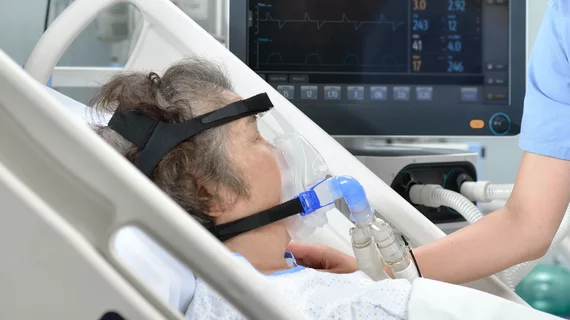Convolutional neural network pipeline has 100% accuracy distinguishing between COVID and pneumonia
A fully automatic pipeline of convolutional neural networks and capsule networks was able to accurately differentiate between COVID-19 and community-acquired pneumonia (CAP) on chest CT images, according to new research.
Chest CTs have been crucial in achieving a timely diagnosis for patients who present with symptoms consistent with COVID. However, COVID-19 and CAP have similar appearances on such scans. It can be difficult for a radiologist to accurately differentiate between the two, but doing so is pertinent to a patient’s treatment plan.
The researchers proposed using a fully automatic pipeline of convolutional neural networks (CNNs) and capsule networks to assist radiologists in discerning between COVID and CAP.
“Radiologists have a high specificity but moderate sensitivity for distinguishing COVID-19 from CAP, which implies missed diagnoses of COVID-19. Thus, deep learning is effective for screening,” Bin Tian, with the Department of Radiology at the Second People's Hospital of Guiyang in China, and co-authors explained.
The pipeline, which was modeled after a radiologist's diagnostic processes, included four modules: lung segmentation, selection of slices with lesions, slice-level prediction and patient-level prediction. The researchers included proven CNNs that have yielded high performance ratings in previous studies.
A dataset of 326 CT scans was used to train the pipeline, as well as an additional dataset of 110 patients to appraise its generalization capability.
Researchers noted that using the pipeline was simple and offered understandable projections. At the patient level, its prediction accuracy was 100%, compared to the 65.1% and 66.8% diagnostic accuracy achieved by two radiologists. Adding modules for lung segmentation and selection of slices with lesions enhanced the pipeline’s capabilities.
“Because the four modules mimic the diagnostic process of radiologists, the pipeline is convenient for use by radiologists and provides explainable predictions. The proposed pipeline can accelerate diagnosis and augment the performance of radiologists,” the experts disclosed.
You can view the detailed research in Computers in Biology and Medicine.

